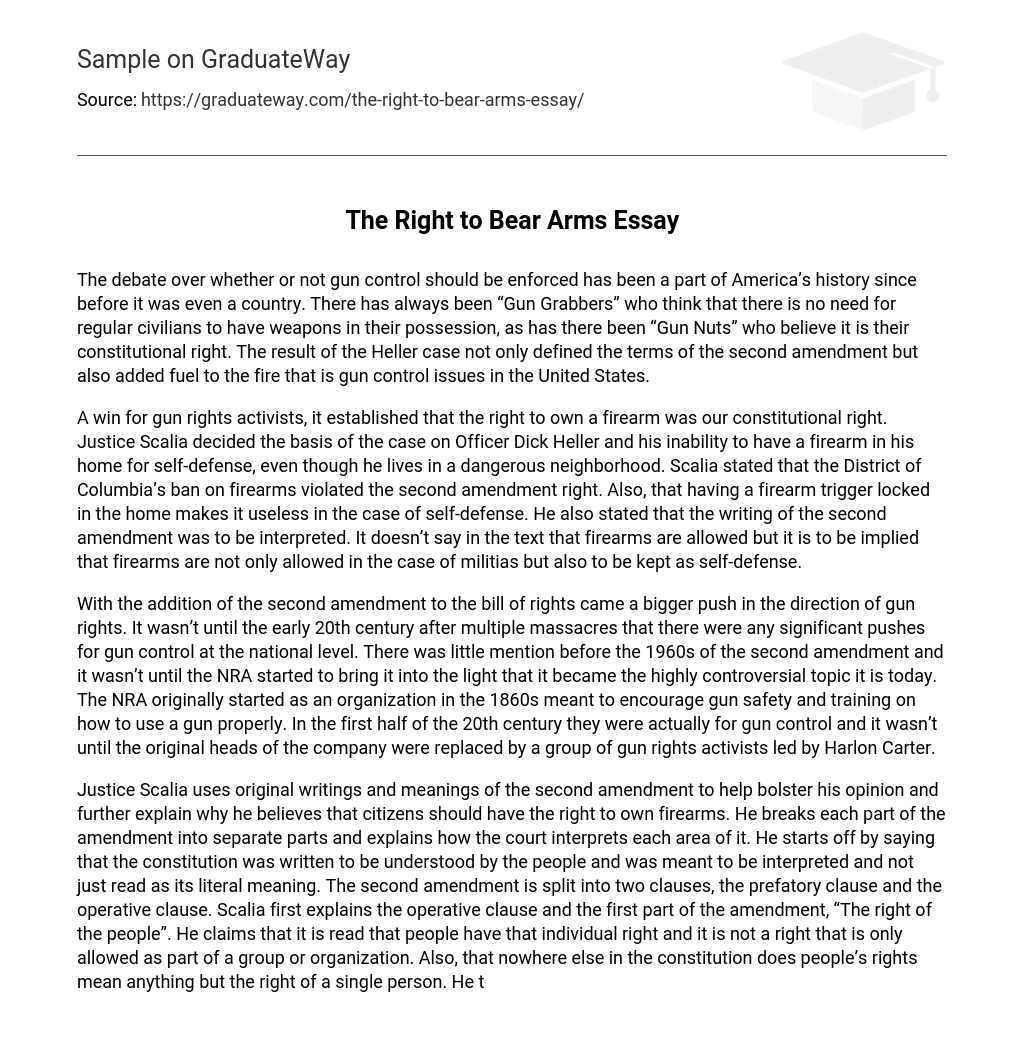The debate over whether or not gun control should be enforced has been a part of America’s history since before it was even a country. There has always been “Gun Grabbers” who think that there is no need for regular civilians to have weapons in their possession, as has there been “Gun Nuts” who believe it is their constitutional right. The result of the Heller case not only defined the terms of the second amendment but also added fuel to the fire that is gun control issues in the United States.
A win for gun rights activists, it established that the right to own a firearm was our constitutional right. Justice Scalia decided the basis of the case on Officer Dick Heller and his inability to have a firearm in his home for self-defense, even though he lives in a dangerous neighborhood. Scalia stated that the District of Columbia’s ban on firearms violated the second amendment right. Also, that having a firearm trigger locked in the home makes it useless in the case of self-defense. He also stated that the writing of the second amendment was to be interpreted. It doesn’t say in the text that firearms are allowed but it is to be implied that firearms are not only allowed in the case of militias but also to be kept as self-defense.
With the addition of the second amendment to the bill of rights came a bigger push in the direction of gun rights. It wasn’t until the early 20th century after multiple massacres that there were any significant pushes for gun control at the national level. There was little mention before the 1960s of the second amendment and it wasn’t until the NRA started to bring it into the light that it became the highly controversial topic it is today. The NRA originally started as an organization in the 1860s meant to encourage gun safety and training on how to use a gun properly. In the first half of the 20th century they were actually for gun control and it wasn’t until the original heads of the company were replaced by a group of gun rights activists led by Harlon Carter.
Justice Scalia uses original writings and meanings of the second amendment to help bolster his opinion and further explain why he believes that citizens should have the right to own firearms. He breaks each part of the amendment into separate parts and explains how the court interprets each area of it. He starts off by saying that the constitution was written to be understood by the people and was meant to be interpreted and not just read as its literal meaning. The second amendment is split into two clauses, the prefatory clause and the operative clause. Scalia first explains the operative clause and the first part of the amendment, “The right of the people”. He claims that it is read that people have that individual right and it is not a right that is only allowed as part of a group or organization. Also, that nowhere else in the constitution does people’s rights mean anything but the right of a single person. He then moves on to explain the next part of the clause, “Keep and Bear Arms”. Scalia uses multiple historic sources to define the term arms and how it may apply to the current day.
Scalia said that although he believed that Justice Ginsburg accurately described the meaning of “bear arms” in her opinion, he believed that she was not accurate in her belief that it only applied to militias. He also stated that the meaning of the term bear arms should be defined as it was in multiple state constitutions in the eighteenth century which is carrying a weapon in defense of themselves and their state. Scalia then goes on to try and discredit Justice Stevens’ opinion and explain why his dissention is false. He claims that Stevens focuses too much on information that Scalia believed isn’t valid. Next he moves on to explain what the operative clause is as a whole and how it reads that the right to bear arms in self-defense is a right of the people. Scalia then goes on to explain the second part of the amendment, the prefatory clause. The first part of the clause, “Well Regulated Militia”, describes physically able men that other than meeting sparingly for exercises, were left to do their own jobs.





